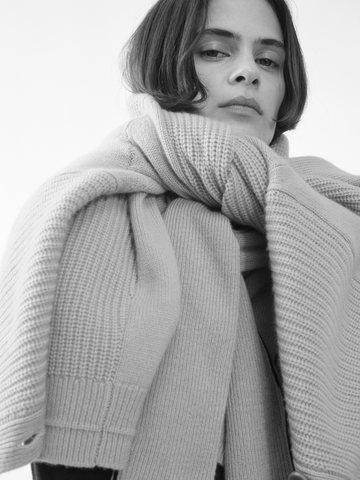
We love recycled materials. Not only do they use significantly less water, electricity, chemicals, and carbon, but they also use waste, rather than creating it.
Naturally, cashmere is a beautiful, biodegradable, organic fiber, cherished over centuries for its softness, warmth and rarity. However, over the past two decades, with the dominance of fast fashion, we have commoditized a once luxury item. Rather than buying one high quality, cashmere sweater and wearing it repeatedly, we now find ourselves with many versions, brands, weights and colors at a range of price points.
This increased demand has led cashmere goats over-grazing pastures in China and Mongolia, creating deserts out of former natural grasslands. There is not only an environmental impact to over- grazing, but also a human impact. Cashmere herders can no longer rely on fertile pastures to raise their goats and so their livelihoods are now severely at risk.

Our recycled cashmere is made in Italy. Our factory gathers used cashmere sweaters from all over the world giving them a second life. After the cashmere garments are collected, they are checked by hand to confirm the fibers are in fact cashmere and then divided into color lots. The cashmere lots are then broken down into smaller pieces, combed several times and re-spun to create new luxurious yarns.
In order to create a more sustainable sourcing strategy around cashmere production, we need to embrace recycling, regenerating the vast amounts of cashmere we have already created over the past 20 years.

Our yarns are certified by the Global Recycled Standard ensuring that all steps of the production process are traceable, and are made to the highest standard, while protecting workers’ rights.
We believe using recycled cashmere, in tandem with supporting regenerative farming practices (controlling animal grazing and increasing biodiversity) will allow the deserts we have created in Asia to renew and become pastures again. In fact, regenerative farming not only has the potential to protect our supply of clothing materials, but can also protect our food supply, increase the nutritional value of our food and possibly reduce the amount of carbon in our environment.
With everything we create, our goal is to make beautiful garments with the least environmental impact; clothing our customers will cherish and wear repeatedly.










